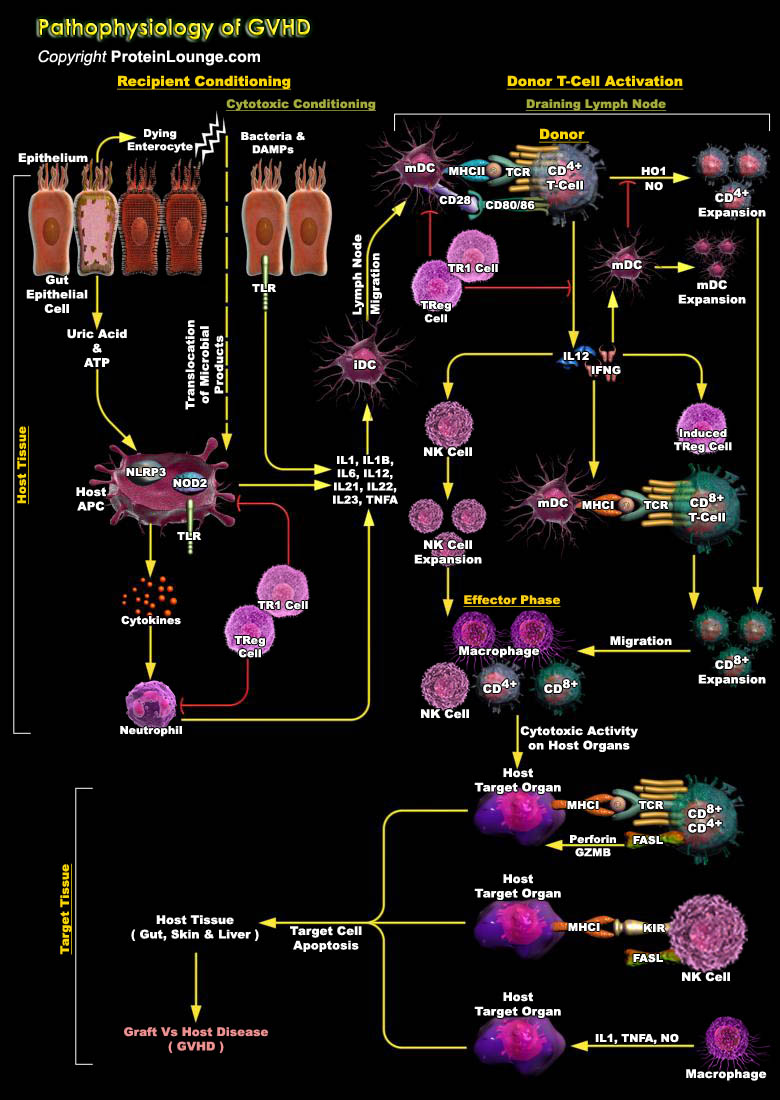Featured Pathways

Proteases are expressed by normal cells in tissue remodeling events and also during pathological events such as tumor invasion and metastasis. Some of the proteases including serine proteinases and MMPs (Metalloproteinases) have been implicated in remodeling of the ECM (Extracellular Matrix) in lung injury and lung neoplasia. These enzymes influence inflammatory[..]

Neurotrophins are an important class of signaling molecules in the brain responsible for axon targeting, neuron growth, maturation of synapses during development, and synaptic plasticity. This family of molecules includes NGF (Nerve Growth Factor), BDNF (Brain Derived Neurotrophic Factor), NT3 (Neurotrophin-3) and NT4 (Neurotrophin-4) [Ref.1].
Brain-derived neurotrophic factor[..]

Sodium transport across the tight epithelia of Na+ reabsorbing tissues such as the distal nephron and colon is the major factor determining total body Na+ levels, and thus, long term blood pressure. Aldosterone, a steroid hormone that is primarily produced in the outer layer of the adrenal cortex, maintains total organism sodium balance in all higher vertebrates. Principally, in humans,[..]

Neurotrophic factors are a broad set of peptide growth factors that tightly regulate many critical aspects of the ontogeny of neurons, such as the number of neurons in a given population, neurite branching and synaptogenesis, adult synaptic plasticity and maturation of electrophysiological properties. Neurotrophic factors include Neurotrophins, Neurokines and GDNF (Glial-cell-line-derived[..]

CRH (Corticotropin-Releasing Hormone) and related peptides play a major role in coordinating the behavioral, endocrine, cardiovascular, autonomic and immune mechanisms that allow mammals to adapt under both basal and stressful conditions. Their actions are mediated through activation of two types of GPCRs (G-Protein-Coupled Receptors): CRHR1 (CRH Receptor-1) and CRHR2 (CRH Receptor-2) encoded by[..]

AD (Alzheimer's Disease) is a neurodegenerative disorder leading to amnesia, cognitive impairment, and senile dementia. Two types of lesions characterize the disease: SPs (Amyloid or Senile Plaques) resulting from the extracellular aggregation of ABeta (Amyloid Beta) peptide, which is derived from a ubiquitous type I transmembrane protein named APP (Amyloid Precursor Protein), and NFTs[..]

WNV (West Nile Virus) is a single-stranded positive-polarity enveloped virus with icosahedral symmetry virus and the etiologic agent of West Nile encephalitis. It is a member of the Japanese encephalitis virus antigenic group within the family Flaviviridae, which can cause fatal encephalitis associated with damage to the CNS (Central Nervous System) in humans and animals. Wild birds[..]

Cancer is a multistep process that includes deregulation of cell cycle, transformation, invasion of stroma, angiogenesis and metastasis. Angiogenesis is an essential component for tumor development regulated by both proangiogenic and antiangiogenic factors (Ref.1). It is a multi-step process that includes endothelial cell proliferation, migration, basement membrane degradation, and new lumen[..]


The cytokine MIF (Macrophage Migration Inhibitory Factor) is an integral mediator of the innate immune system. Monocytes and macrophages constitutively express large amounts of MIF, which is rapidly released after exposure to bacterial toxins and cytokines. MIF exerts potent proinflammatory activities and is an important cytokine of septic shock. MIF regulates innate immune responses to[..]

The innate immune response to bacteria is essential for survival but the systemic release of inflammatory mediators results in the life-threatening Septic-shock reaction. Macrophages are essential effector cells of innate immunity that play a pivotal role in the recognition and elimination of invasive microorganisms. Mediators released by activated macrophages orchestrate innate and adaptive[..]





















